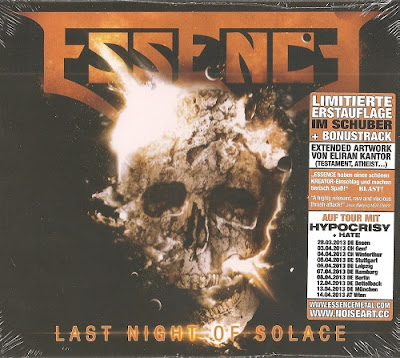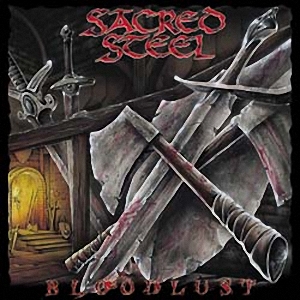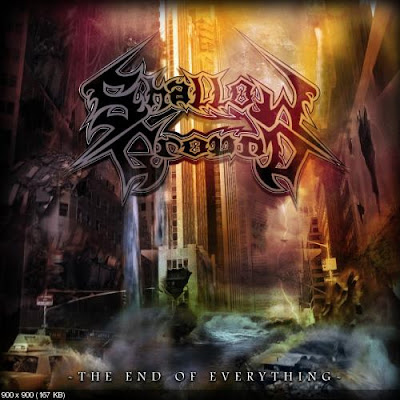Steve Vai - The Story Of Light
I started playing the guitar at about age thirteen. Like many guitarists, I started with easy songs, and so my taste in music reflected my ability. I listened to Green Day, Rage Against the Machine, The Offspring, and so forth. It was the early 90s, and "grunge" and "alternative" music was what was popular. As my familiarity with the instrument increased, my tastes evolved toward the grungier side of things, and I developed a keen appreciation for the music of Soundgarden, Alice in Chains, and Stone Temple pilots. I loved the way they used alternate tunings. I loved the simple-yet-innovative musical passages upon which they built whole songs.
But by the time I was sixteen, I realized that I was becoming obsessed with the guitar solos in the music I listened to. This lead me first to Dweezil Zappa's band at the time, Z, and then eventually I dove deep into the world of instrumental guitar music.
Anyone who takes that path is bound to wind up voraciously devouring and analyzing the music of Steve Vai. One reason for this is that Vai has been responsible for an uncanny amount of music that is considered "classic" among guitar aficionados. He started his career playing some of the zanier passages in Frank Zappa's early-80s music, then moved on to write and perform important 80s music for David Lee Roth, Alcatrazz, and White Snake. His career as a backup musician could stand on its own laurels, but somehow Vai managed to use this experience as a springboard to his extremely successful solo career as an instrumental guitarist.
Vai was "wanking" when playing guitar solos was called "wanking." When the gods of the popular music industry were cloaking themselves in muddy plaid shirts and baggy cutoff shorts, Vai was drenching himself in silver-blue paint and leather pants. It's not that he is an anachronism, it's that he is Steve Vai. He just does his weird thing, and maintains his fanbase accordingly. He is clearly an eccentric, evidenced by his bee-keeping hobby, his obsession with vaguely Eastern, vaguely pagan mysticism, his filming a whole concert DVD with eye liner and body glitter on his face, and so on.
As a listener, one must occasionally pause and wonder whether Steve Vai is some sort of guitar-based mad scientist or pompous megalomaniac, although I suspect the real answer is that his penchant for all this lunacy is nothing more than his brand.
He's getting old, and young guitarists have moved on to other types of music. In fact, most young people don't really even play lead guitar anymore. And CDs are clunky, expensive things to waste money on when you can get the album for free on Spotify. So 2012 is an odd time to release the second installment of a three-album sonic triptych, the first of which came out seven years ago. But one thing we should all know by now is that Vai just does his thing, and his fans appreciate that.
What his fans are sure to appreciate most about The Story of Light is the fact that Steve Vai has finally managed to produce an entire album of excellent guitar tones. What's remarkable about this fact is that this is coming from a guitarist whose tone Frank Zappa once described as sounding like "an electric ham sandwich."
Vai's tones have gone through a big evolution over the years, but to me they always sounded thin and twerpy. Even when I thought he was the greatest guitar player ever to live, his tone always baffled me a little bit. It sounded like grape juice being squeezed out of a banjo. It was at once fizzy, flubby, shrill, quacky, and thin. To me, it was as if he got everything wrong.
In terms of tone, Steve Vai gets everything right on The Story of Light. From the first note of the crushing title track to the complex and woody acoustic notes in "Gravity Storm," Vai manages to drench every second of his playing on the album in glowing, warm, fat tone.
But what about the music? For me, The Story of Light contains both the best aspects of Steve Vai, and the worst.
In "The Story of Light," "Weeping China Doll," and "Racing the World," he has managed to record some of the finest music of his entire career. The characteristic compositional complexity is there, along with the hard-earned confidence and maturity of a man in his 50s with a recording career spanning three decades. His tones are brilliant, his leads are sharp and athletic, his band is tight, and above all the songwriting is the most perfectly channeled of his entire career. Everything about these songs is as jaw-dropping as can be expected from a rock music legend.
It is interesting to note that Vai has returned once again to the world of 7-string guitar. As dedicated fans know, he made a name for himself as a 7-string player, but never really played a lot of 7-string guitar music. That all changes on The Story of Light, where perhaps Vai has elected to dust off the lower notes to stay relevant in a world where even 8- and 9-string guitars are starting to dominate.
Vai's having been influenced by modern music certainly doesn't stop there, either. I was rather impressed by the way he managed to put his own spin on djent-like compositional style, slowing things down to a deeper groove, while offering a few winks to the melodic style of the new dominant guitar music genre. Nonetheless, he doesn't really float off into djent, although it has clearly made an impression on him. And the influence breathes a great deal of life into his melodic approach.
At the same time, "John the Revalator" is, in my opinion, terrible. It drags on and on as a rather white-sounding gospel choir repeats the same melody over and over as Vai descends into guitar solos that can only be described as inattentive. The song goes nowhere. In "Velorum," "The Moon and I," and "Sunshine Electric Raindrops," Vai treads a well-worn path he has walked many times, to the point that the songs themselves are nearly forgetable. One way of spinning this is that he sticks to his strengths; in reality, these songs feel like forgotten B-sides from Vai's early 90s work.
"Gravity Storm" is an interesting piece in that it is stripped-down and simple in both delivery and composition. Had he released this song as a twenty-something guitar jockey in the 80s, it would be a classic. Today, it feels lazy coming from a man who has simply done much more in his career.
And finally, Vai shows of his utmost worst attributes in "Creamsicle Sunset." For all his self-indulgence, Vai is only truly offensive when he is stealing from Frank Zappa. This song is something of an amalgamation of "Watermelon in Easter Hay" and "Zoot Allures." From the tone to the chord changes, it is Vai once again aspiring to be his brilliant mentor and falling far short of the mark. This, too, would be forgiveable for any artist but Vai, who has over the course of his career stolen FZ melodic passages note-for-note, FZ quotes word-for-word, and who has invested a lot of his time claiming ownership to the Zappa musical legacy.
Setting aside its shortcomings, though, there is no doubt that this is a solid record full of soaring tones and meaty guitar music. Any guitarist with two functional ears and taste for instrumental rock would be well-served to immerse themselves in this album for a while. When I get over my biases (Vaiases?), even I have to admit that this is a strong album of good, solid music from one of rock's most enduring players.
copas from http://www.stationarywaves.com/2012/08/album-review-steve-vai-story-of-light.html
Tracklist:
01. The Story Of Light [06:15]
02. Velorum [06:09]
03. John The Revelator [03:40]
04. Book Of The Seven Selas [03:56]
05. Creamsicle Sunset [03:30]
06. Gravity Storm [05:33]
07. Mullach A'tSi [03:57]
08. The Moon And I [07:18]
09. Weeping China Doll [06:11]
10. Racing The World [03:45]
11. No More Amsterdam [04:16]
12. Sunshine Electric Raindrops [04:16]
TKP
password : my nymph
.jpg)


























































